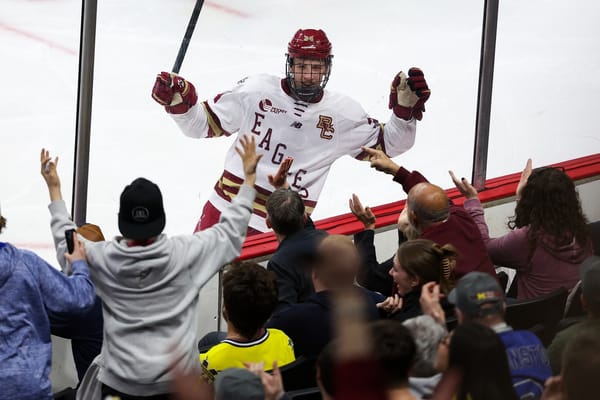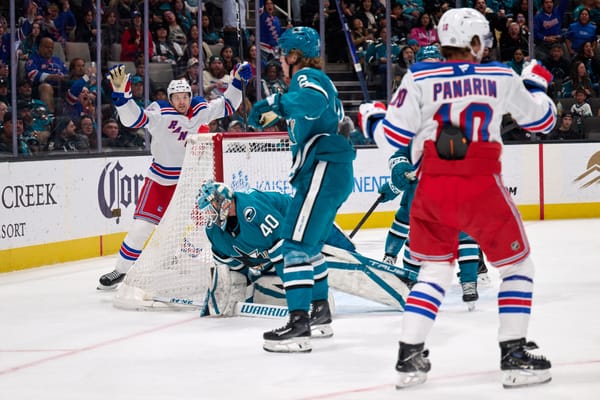5 Reasons You Shouldn’t be Worried About Kevin Shattenkirk
It hasn’t taken long for us to put the play of Kevin Shattenkirk under a microscope this year, has it?
Before the New York Rangers’ most expensive defenseman broke through with a two-assist night on October 17 against the Colorado Avalanche that was capped off by a shootout-winning goal, he was held pointless in four games. Even more noteworthy was the decision by new head coach David Quinn to bench Shattenkirk against the Carolina Hurricanes and make him a healthy scratch against the San Jose Sharks.
Many of the most alarmed voices have gone quiet after Shattenkirk’s breakthrough game against his former team, but there are still many who are concerned about his overall play this year. Let’s look at five reasons why you shouldn’t be losing any sleep over Shattenkirk.
We should have expected some rust
Shattenkirk’s last regular season action before the beginning of the 2018-19 season was on January 18, 2018. He essentially missed half of last season with his knee injury and before he was taken out of the lineup, he was playing hurt. Yes, he’s a professional athlete and we should expect him to bounce back, but that was always going to take a little bit of time.
Quinn penned him into the Rangers’ lineup for two preseason games and then played him 20:41 against the Nashville Predators and 22:23 against the Buffalo Sabres. Quinn benched him on Oct. 7, the second game of a back-to-back, which resulted in a six-day break from the lineup for Shattenkirk.
It’s still really, really early
The Rangers have played seven games this year and Shattenkirk has played in half a dozen of them. The bottom line is that he isn’t the only Ranger who has had a rocky start to the season. The Rangers players, including their veterans, are adjusting to the expectations and demands of a new coach.
Shattenkirk’s most frequent partners thus far have been Brendan Smith and Fredrik Claesson. Claesson, of course, was a free agent signing on July 1 and Smith and Shattenkirk shared 92:18 of 5-on-5 ice time together last season before Smith was banished to the AHL. Just like the rest of the Rangers’ defensemen, Shattenkirk is settling into his role.
He’s still Shattenkirk
We can safely assume that Shattenkirk didn’t cross paths with a petty sorcerer who transformed him into a lesser hockey player during the summer. He’s still tied (with Drew Doughty) for 10th among NHL defensemen in power play points since the 2015-16 season despite missing half of last year. And yes, the contract that he signed two offseasons ago was still a bargain.
Shattenkirk comes in at Cane's projected salary and on a great term-length. This is a big boost for NYR's blue line. pic.twitter.com/KUAd2kafas
— Sean Tierney (@ChartingHockey) July 1, 2017
A big part of the problem here is that some seem to expect Shattenkirk to be an elite defenseman who can play in all situations like a Victor Hedman or an Erik Karlsson — but that has never been who he is. Shattenkirk is a puck-moving defenseman who can run a power play that almost every team in the NHL would love to have on the right side of its first or second pair.
It’s important to remember that before Jeff Gorton finally shut Shattenkirk down for the season last January, he had been playing hurt. He was playing on one knee and still had 23 points — 12 of which came on the power play — in 48 games. At the moment, Shattenkirk has 25 career points as a Ranger in 52 games. That’s not bad for a guy who’s best before his 56-point season in 2016-17 was a 45-point campaign in 2013-14.
The power play
The Rangers power play has a success rate of 18.2 percent (down from 21.2 percent) through 22 opportunities. That number has jumped up since the Blueshirts have converted on three of their last 10 opportunities in the last two games. The power play’s slow start to the year played a direct role in Shattenkirk going pointless in his first four games of the year.
Related
A (Very) Early Look at the Rangers Power Play
Blueshirt Banter’s Scott Maran recently wrote about why we should be optimistic about the Rangers power play and Shattenkirk is a big part of that. In a little under 21 minutes of time on the power play, he’s clearly had a positive influence on proceedings which includes a primary assist.
Let’s talk about luck
I’m sure most of us are tired of small sample size disclaimers proceeding a paragraph or two filled with analysis of data from a small sample size, but Shattenkirk’s 94.53 PDO is something we need to address when we talk about his play this season. That is abnormally low, even for the numbers we see when we work with small sample sizes.
It’s also worth mentioning that Shattenkirk’s underlying numbers are above average relative to the team, including a plus-3.29 percent relative Corsi and plus-4.75 percent relative expected goals, meaning the Rangers are better with him on the ice. He’s absolutely been a bright spot on the Rangers’ blue line thus far and, because he is who he is, that will almost certainly be the story for the rest of the year.
Data courtesy of Corsica.Hockey and Naturalstattrick.com




